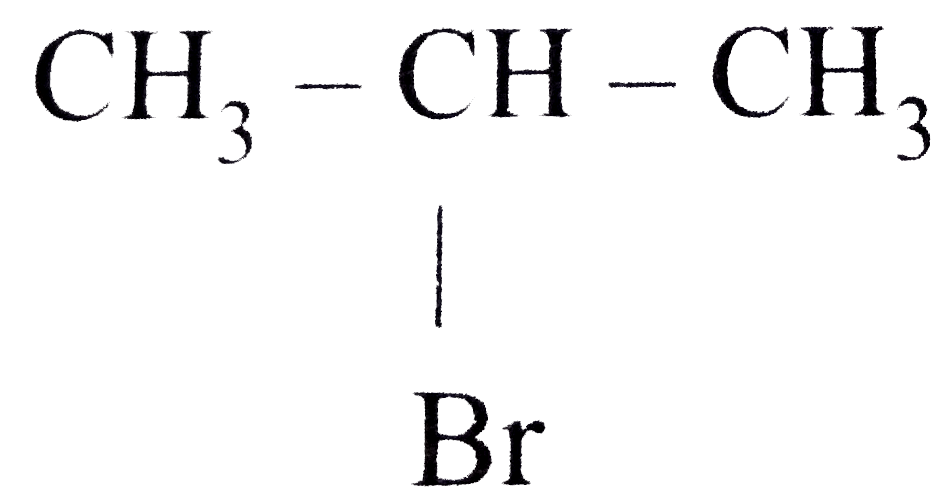Identify the correct pathway to convert propanoic acid to ethylamine. The reagent represented by A, B and C are
CH3CH2COOHA−−→XB−−→YC−−→CH2CH2NH2
ABCCa(OH)2HeatPt/H2
ABCSOCl2NH3Br2/KOH
ABCHNO2P+I2LiAlH4
ABCHCNNH3Br2/KOH
The correct Answer is:B
To convert propanoic acid (CH₃CH₂COOH) to ethylamine (CH₂CH₂NH₂), we can follow these steps:
Step 1: Convert Propanoic Acid to Acid Chloride
- Reaction: Propanoic acid reacts with thionyl chloride (SOCl₂).
- Equation:
CH3CH2COOHA→CH3CH2COCl
- Explanation: The hydroxyl group (-OH) of propanoic acid is replaced by a chlorine atom, forming propanoyl chloride.
Step 2: Convert Acid Chloride to Amide
- Reaction: The acid chloride reacts with ammonia (NH₃).
- Equation:
CH3CH2COClB→CH3CH2CONH2
- Explanation: The chlorine atom is replaced by an amine group (-NH₂), forming propanamide.
Step 3: Convert Amide to Ethylamine
- Reaction: The amide undergoes hydrolysis in the presence of bromine (Br₂) and potassium hydroxide (KOH).
- Equation:
CH3CH2CONH2C→CH2CH2NH2
- Explanation: The amide is converted to ethylamine through a reaction that involves the removal of the carbonyl group and the formation of ethylamine.
Summary of Reagents
- A: SOCl₂ (Thionyl chloride)
- B: NH₃ (Ammonia)
- C: Br₂ and KOH (Bromine and Potassium Hydroxide)
Final Answer
The correct pathway is:
- A = SOCl₂
- B = NH₃
- C = Br₂, KOH
Thus, the answer is option number 2.
---
- Reaction: Propanoic acid reacts with thionyl chloride (SOCl₂).
- Equation:
CH3CH2COOHA→CH3CH2COCl
- Explanation: The hydroxyl group (-OH) of propanoic acid is replaced by a chlorine atom, forming propanoyl chloride.
- Reaction: The acid chloride reacts with ammonia (NH₃).
- Equation:
CH3CH2COClB→CH3CH2CONH2
- Explanation: The chlorine atom is replaced by an amine group (-NH₂), forming propanamide.
- Reaction: The amide undergoes hydrolysis in the presence of bromine (Br₂) and potassium hydroxide (KOH).
- Equation:
CH3CH2CONH2C→CH2CH2NH2
- Explanation: The amide is converted to ethylamine through a reaction that involves the removal of the carbonyl group and the formation of ethylamine.
- A: SOCl₂ (Thionyl chloride)
- B: NH₃ (Ammonia)
- C: Br₂ and KOH (Bromine and Potassium Hydroxide)
The correct pathway is:
- A = SOCl₂
- B = NH₃
- C = Br₂, KOH
Similar Questions
Knowledge Check
The reaction CH2=CH−CH3+HBr→CH3−Br∣CHCH3 is
Anucleophilic additionBfree radical additionCelectrophilic additionDelectrophilic substitutionCH3CH2CH2−O∣∣C−H+CH3−C≡ChNa,NH3(l)−−−−−−−→
A B
B C
C D
D
CH3CH2COOHCl2/Fe−−−−→(X)Alc.−−→KOH(Y)
Compound (Y) is :
View SolutionIdentify Z in the following series
CH2=CH2HBr−−→XHydrolysis−−−−−−→YNa2CO3−−−−→I2excessZ
View SolutionCH3CH2COOHRed P/HI−−−−−→ is alc. KOH−−−−→Product. Product
View SolutionIdentify the reagents A and B respectively in the following reactions
CH3COOHA−−→CH3COClB−−→CH3CHO
View SolutionF3C−CH=CH2HBr−−→(A)Nal−−−−−−−−−→dry.acetone(B)
View SolutionIdentify the set of reagents / reaction conditions 'X' and 'Y' in the following set of transformations.
CH3−CH2CH2BrX−−→ProductY−−→

View Solution
